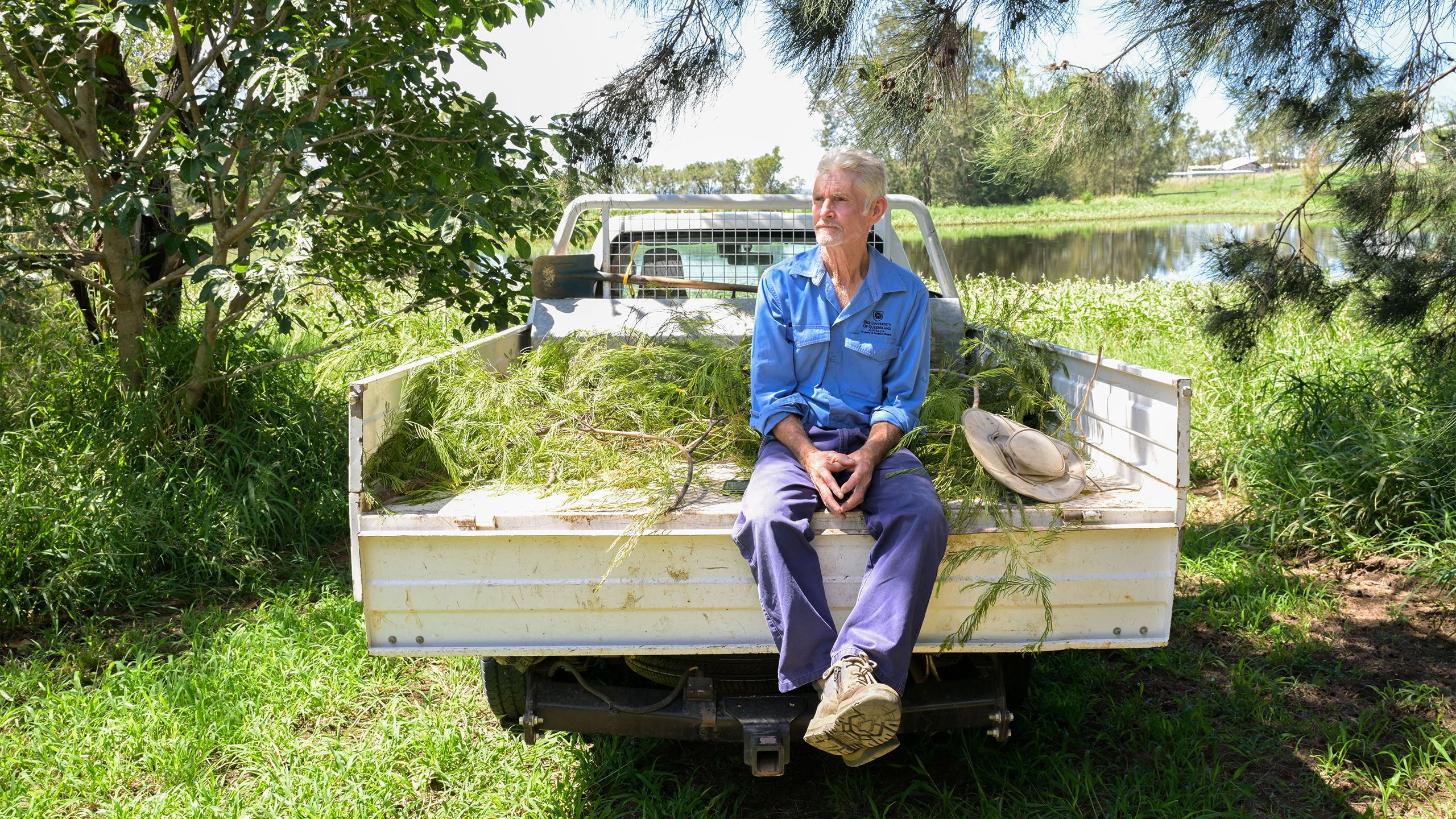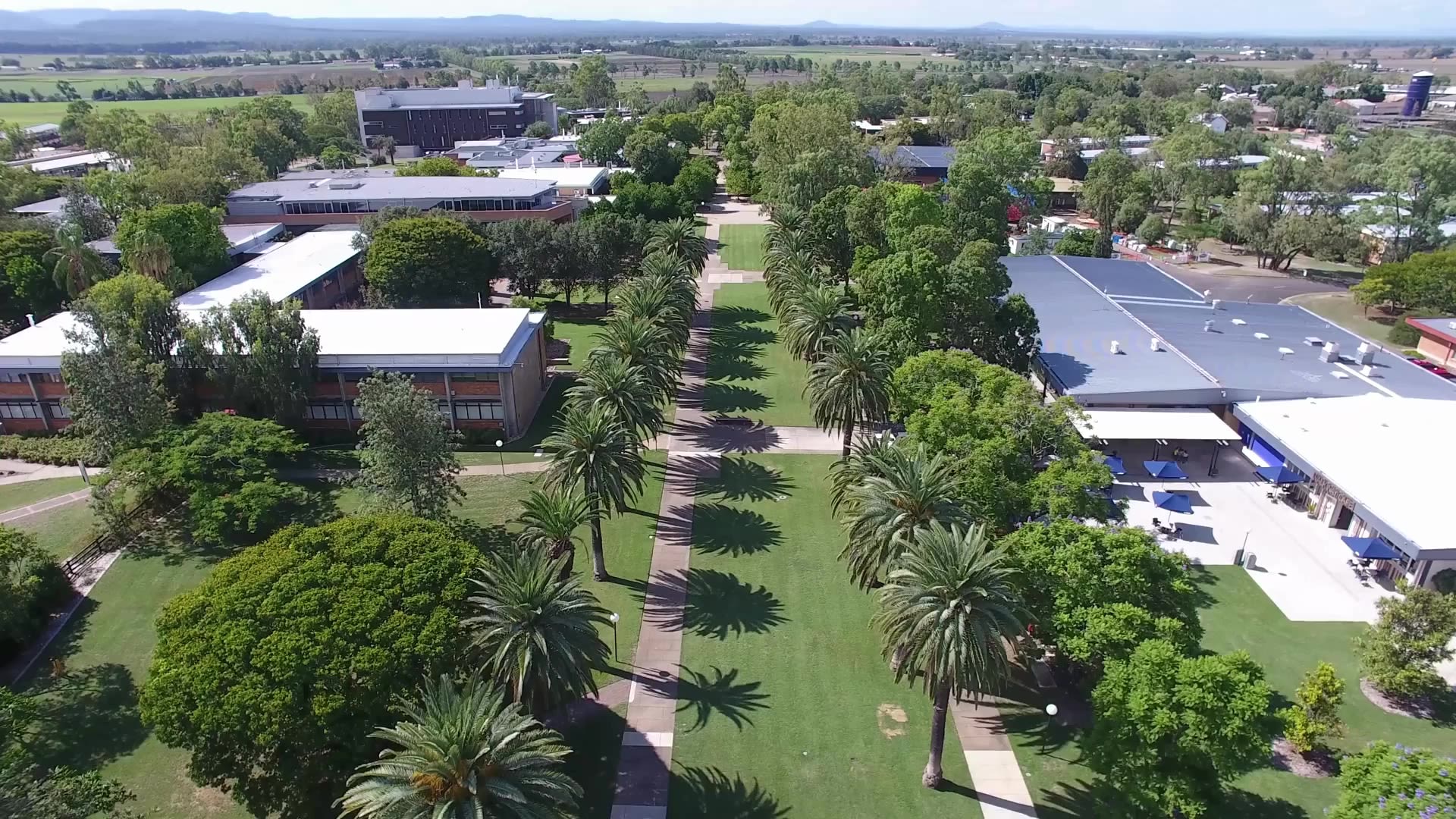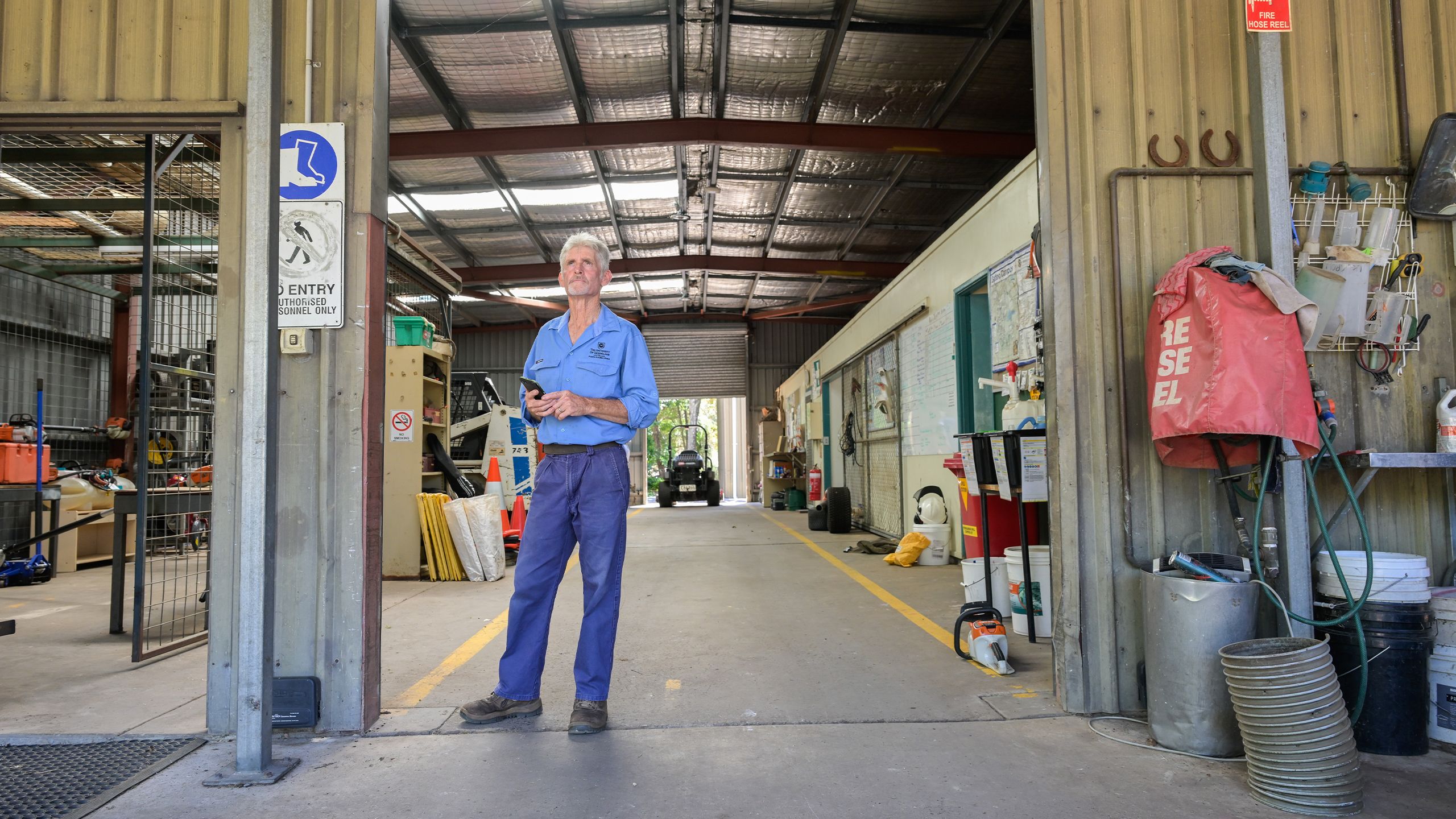Greener pastures

Season of change as UQ Gatton groundsman retires after 43 years
The man who tended the mammoth grounds of UQ’s Gatton campus for more than 4 decades finished his career the same way it began – clearing the destruction and debris of a major weather event.
Grounds supervisor Steve Barakin spent his final week of work cleaning the Gatton campus after ex-Cyclone Alfred paved a path of destruction through South East Queensland.
His first day on the job – on 16 November 1981 – was after a hailstorm lashed the area.
Mr Barakin retired as UQ Gatton grounds supervisor on 20 March, more than 43 years after moving from Weipa on the Cape York Peninsula to the Lockyer Valley to begin work as a general grounds staff member.
Steve Barakin (far right) with colleagues in 1997.
Steve Barakin (far right) with colleagues in 1997.
“I said when I accepted the job that I would only be here for 3 years,” Mr Barakin said.
“But along the way I found a partner and we bought homes and raised a family.
“My wife works at UQ Gatton as well, so the University has been very good to us.”

Floods and storms have been a constant challenge for Mr Barakin and his team.
His crew worked tirelessly to clean up the campus after the 2011 floods, which overwhelmed the Lockyer Valley, Toowoomba and the Greater Brisbane region killing 36 people, and in 2022 when floods again swamped the region.
“I’ve lived in a couple of the college houses over my time, including in a house down near the creek, and I remember stepping into the backyard and seeing a wall of water and debris coming towards me,” Mr Barakin said.
“We were pretty much isolated in the house because sections of the roads in and out were flooded.
“Storms have ripped through the campus on countless occasions and made a mess of trees and the grounds, and we’ve needed all hands on deck to clean up.”
Services Road at UQ's Gatton campus was submerged during the floods in 2011.
Services Road at UQ's Gatton campus was submerged during the floods in 2011.
Mr Barakin’s work within the Property and Facilities Division at UQ Gatton is on show for all to see, with his team responsible for maintaining the iconic features of the heritage-listed campus (established in 1897) – including the avenue of century-old Canary Island date palms that extend from the Warrego Highway through the heart of the campus to the Foundation Building.
The Gatton campus has undergone a raft of changes in its history – most notably between March 1942 and July 1944 when the United States Army requisitioned the campus to establish a military hospital during World War II, and in 1990 when the Queensland Agricultural College amalgamated with UQ.
Mr Barakin’s duties have changed significantly over the years as well, particularly with the advancement of technology and machinery.
“Ride-on mowers changed the game,” he said.
“I can’t imagine how we ever used to maintain the grounds with small hand mowers.
The walkway between Morrison Hall and the Foundation Building at the Gatton campus in 1987. Image: UQ Gatton Past Students’ Association Museum
The walkway between Morrison Hall and the Foundation Building at the Gatton campus in 1987. Image: UQ Gatton Past Students’ Association Museum
The UQ Gatton campus covers 1068 hectares, and Mr Barakin said his duties spanned the extent of the campus when he first started work there in the 1980s.
“I was involved in controlling noxious weeds so I would often be working in the paddocks and other agricultural sections of the campus,” he said.
“We would cover every square inch – I keep telling the younger guys here that we used to get out with onion shears and do the edging.
“They wouldn't know what hit them if they had to go around to do all the edging without machinery.
“We’ve certainly evolved to be more efficient in our ways of working, and the advancement of battery-powered equipment in recent years has helped to reduce carbon emissions.”

Mr Barakin’s team is also responsible for maintaining and preparing the sporting fields – duties the team was particularly renowned for during the 1980s and ’90s.
“At one stage, the Tom Graham Playing Field was referred to as the best turf cricket pitch in the region,” Mr Barakin said.
It was one of the reasons why the English cricket team played a match against South East Queensland Country at the field during their Ashes tour of Australia on 22 October 1986.
The English side – featuring Test stars David Gower, Chris Broad, John Emburey, Phil DeFreitas and Allan Lamb – went on to win by 58 runs, with Lamb scoring 111 not out in front of almost 4,500 spectators.
Lamb reached 87 with one over remaining in the innings. And as some spectators climbed stockyards for a better view, he brought up his century in style, smashing 24 runs off the final over and ending the innings with a six that scattered a picnicking group.
A crowd of 4,500 spectators watched England (pictured) take on South East Queensland Country at the Tom Graham Playing Fields at the Gatton campus in 1986. Image: UQ Gatton Past Students’ Association Museum
A crowd of 4,500 spectators watched England (pictured) take on South East Queensland Country at the Tom Graham Playing Fields at the Gatton campus in 1986. Image: UQ Gatton Past Students’ Association Museum
“It’s important that these historical sites and buildings are maintained and restored,” Mr Barakin said.
“The Tom Graham Playing Field is a classic precinct with the white fence and historic little grandstand.
“It’s a shame there's not a placard somewhere to commemorate the match in 1986 so people know about its history.”
Looking back on the past 43 years, Mr Barakin said he was most proud of the landscaping he has done at the campus, which is now well established.
“Landscaping is my forte and the environmental aspect of my job has always been rewarding,” he said.
“There’s still a lot more I wish I could have done from a landscaping perspective, but it’s great to know that what my team has achieved will remain for others to enjoy.”
Mr Barakin said he would like to thank the many staff and students he has worked with over the years who have helped make the campus what it is today.
“At the end of the day, it's great to have had the opportunity to work at a place for so long and to be able to look back and see the established environment around the campus.”






